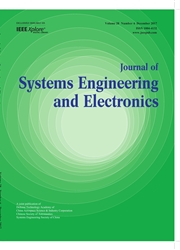

 中文摘要:
中文摘要:
Overlapping community detection in a network is a challenging issue which attracts lots of attention in recent years.A notion of hesitant node(HN) is proposed. An HN contacts with multiple communities while the communications are not strong or even accidental, thus the HN holds an implicit community structure.However, HNs are not rare in the real world network. It is important to identify them because they can be efficient hubs which form the overlapping portions of communities or simple attached nodes to some communities. Current approaches have difficulties in identifying and clustering HNs. A density-based rough set model(DBRSM) is proposed by combining the virtue of densitybased algorithms and rough set models. It incorporates the macro perspective of the community structure of the whole network and the micro perspective of the local information held by HNs, which would facilitate the further "growth" of HNs in community. We offer a theoretical support for this model from the point of strength of the trust path. The experiments on the real-world and synthetic datasets show the practical significance of analyzing and clustering the HNs based on DBRSM. Besides, the clustering based on DBRSM promotes the modularity optimization.
 英文摘要:
英文摘要:
Overlapping community detection in a network is a challenging issue which attracts lots of attention in recent years.A notion of hesitant node(HN) is proposed. An HN contacts with multiple communities while the communications are not strong or even accidental, thus the HN holds an implicit community structure.However, HNs are not rare in the real world network. It is important to identify them because they can be efficient hubs which form the overlapping portions of communities or simple attached nodes to some communities. Current approaches have difficulties in identifying and clustering HNs. A density-based rough set model(DBRSM) is proposed by combining the virtue of densitybased algorithms and rough set models. It incorporates the macro perspective of the community structure of the whole network and the micro perspective of the local information held by HNs, which would facilitate the further "growth" of HNs in community. We offer a theoretical support for this model from the point of strength of the trust path. The experiments on the real-world and synthetic datasets show the practical significance of analyzing and clustering the HNs based on DBRSM. Besides, the clustering based on DBRSM promotes the modularity optimization.
 同期刊论文项目
同期刊论文项目
 同项目期刊论文
同项目期刊论文
 期刊信息
期刊信息
